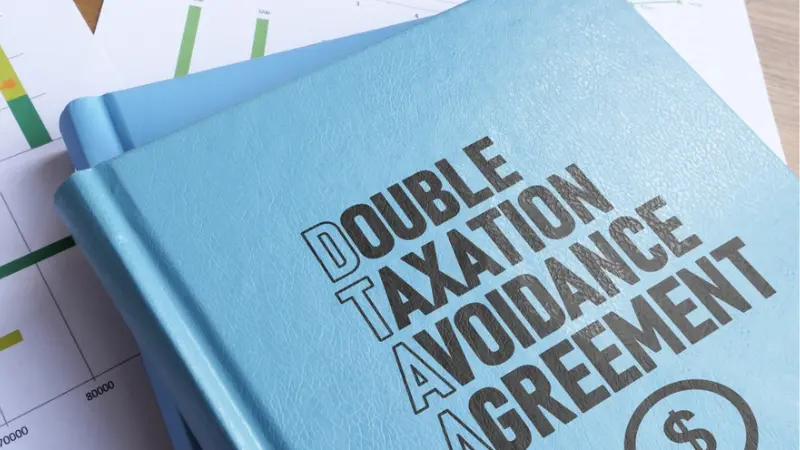
A country’s tax laws act as the backbone for the country to generate revenues and at the same time allow sufficient income to remain in the hands of the taxpayers. With the increasing globalisation, there are many situations of income being accrued in one country and being paid in another. This creates the need for complex tax laws that help in reducing the tax burden for the taxpayers and ultimately avoid cases of double taxation. The DTAA agreements entered between countries serve as the base for taxation in case of inter-country transactions. The meaning of these agreements and related details are mentioned below.
Read More: What are tax havens? Top tax havens in the world
What is the meaning of DTAA in Income Tax and why is it needed?
As per Income Tax Act, 1961, DTAA stands for Double Tax Avoidance Agreement. This is an agreement between two countries that acts as an instrument to avoid any possibility of double taxation on the same income that involves more than one country. India currently has DTAA with 80+ countries.
Section 90 of the Income Tax Act, 1961 provides for the agreements entered between two countries that formulate the laws of taxation between two countries. This includes the income that can be taxed or the rate at which it is taxed. This agreement also includes provisions for determining which country has the primary right and the type to tax under their purview. Furthermore, this agreement is also instrumental in providing for a tax credit or exemption for the income that has been taxed in the other country.
The primary need for DTAA arises when a person or entity has income that is taxable in India as well as in another country. This situation results in the person or entity being subject to double taxation – i.e., the income may be taxed in both countries. Taxation in any case is a deterrent in attracting investments and therefore a case of double taxation can discourage international trade and investment. DTAA is also used to provide information on tax evasion and promote transparency in cross-border transactions. Among the key objectives of the DTAA are to promote international trade and investment and ensure that taxpayers are not subjected to unfair tax treatment.
What are the documents needed to claim the benefits of DTAA?
The process to claim benefits under DTAA requires the taxpayers to provide the following documents.
- Form 10F
Eligible taxpayers need to fill and submit Form 10F to claim DTAA benefits. This form includes key details
- Name of the taxpayer
- Address of the taxpayer
- Tax identification number
- Country of the tax resident
- Income details for which DTAA benefits are to be claimed.
- Self-attested copy of PAN Card
Taxpayers also need to submit a self-attested copy of a valid PAN Card that is issued by the Income Tax Department in India.
- Tax residency certificate
The tax authorities of a country are charged with issuing the tax residency certificate to the taxpayers. This certificate is instrumental in proving the residential status of the taxpayer for claiming the DTAA benefits.
- Tax returns and other Financial Documents
The previous tax returns and the financial data like the company’s financial reports are also to be tabled and reviewed by the tax authorities for releasing the DTAA benefits. This includes salary slips, bank statements, balance sheets, income statements, etc.
What are the tax rates under DTAA?
The tax rates between India and various other countries varies between the agreements and generally range between 7.5 to 15% for TDS on Interest payments.
What are the two modes for claiming benefits under DTAA?
There are two modes of claiming benefits under DTAA namely, the exemption method and the tax credit method. The details of these modes are given below.
- Exemption Method
This method states that any eligible income that is earned in India by a non-resident taxpayer (resident of another country) will be exempt from tax in India. This implies that such income will be taxable in the hands of the non-resident taxpayer in the country where he/she is a tax resident. It is mandatory for the non-resident taxpayer to furnish a tax residency certificate from their respective country where they are a tax resident to claim benefits under the exemption method.
- Tax Credit Method
This method of claiming DTAA benefits is used in case of an eligible income that is taxable in India as well as in another country where the non-resident taxpayer is a resident. In such a situation, the tax paid in India will be allowed as a tax credit against the taxes payable in the other country. In this method too, eligible taxpayers need to furnish a tax residency certificate from the country of which he or she is a tax resident along with other relevant documents such as a certificate of tax deducted at source in India and a copy of the tax return filed in India.
What are the benefits of DTAA?
Some of the prime benefits of DTAA are mentioned below.
- Prevention of double taxation
The key purpose of DTAA is to avoid any situation of double taxation on the same or single income which is taxable as per Indian tax laws and tax laws of another country. This provides taxpayers the much-needed relief in the form of exemption or tax credit for the tax paid in one country against the tax payable in the other country. It is critical in reducing the tax burden on taxpayers and encouraging cross-border trade and investment among nations.
- Reduction in cases of tax evasion
The presence of DTAA between the two countries also helps in reducing the cases of tax evasion. Such agreements also facilitate aggressive tax planning techniques that are backed by greater transparency and exchange of information between the tax authorities of the two countries.
- Lower tax rates
DTAA has many provisions like lower tax rates on certain types of income like interest, dividends, and royalties. Such provisions help in making cross-border investments more attractive and encourage international trade.
- Increased certainty
DTAA chalks out the definitive pathway for taxpayers in determining the jurisdiction of taxation and the tax rates applicable to different types of income. Such definitive provisions are instrumental in avoiding any disputes. This results in providing a more stable and predictable environment for cross-border transactions.
Conclusion
India has a DTAA with all the major countries in the world along with limited agreements with about eight counties across the globe. This allows the taxpayers within India as well as outside to avoid any excess taxation on their income that is taxable in more than one country.
FAQs
Section 90 has provisions relating to the avoidance of double taxation in the case of taxpayers belonging to countries where India has a DTAA. Section 91 on the other hand, refers to provisions in the case of taxpayers belonging to countries that do not have a DTAA with India.
The types of salaries included in DTAA are salaries, capital gains, income from house property, income from savings or fixed deposits, etc.
DTAA agreements are quite dynamic and the provisions of the agreement are different for every country
Yes. DTAA also includes sharing of vital taxpayer information among partner countries to avoid any case of double taxation or tax evasion.


























